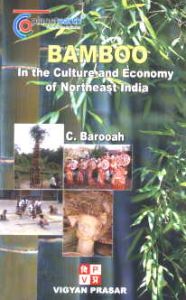
Contents: Foreword. Preface. 1. Introduction. 2. Bamboo as a part of culture in the northeast. 3. Bamboo in the economy of Northeast India. 4. Bamboo and its impact on the environment in North-eastern region. 5. Special initiatives and efforts on part of Govt. of India. 6. Bamboos having industrial application and their uses. 7. Cultivation of bamboo. 8. Some institutes, agencies working on Bamboos. Glossary. References. Index.
"Bamboo is the most important forest produce used by the rural communities in several countries of the Asia-Pacific region. It is also an important source of income for the rural poor. In Asia, the history of Bamboo is so inextricably interwoven with the history of man that it could be characterized as a bamboo civilization. Since this bio resource is multipurpose and leads to the creation of new employment opportunities and income generation, especially in rural communities. The northeastern region of India is rich in diversity of bamboo. Bamboo popularly called, as poor man's timber, is also integral to the life and culture of all the ethnic groups of this region. Its uses for house construction, cottage industry, household articles, agricultural implements and tools, fodder medicine and even food has made it an indispensable commodity for the rural people. Continued technological advancement and researches have put bamboo into more and more ways of uses and as raw materials in several industries. The book briefly describes the importance of bamboo as a single commodity which is important source of raw material for varied end-uses and how bamboos are also used in a myriad ways by the rural people and are interwoven with their life style in many parts of India in particular and Asia in general."